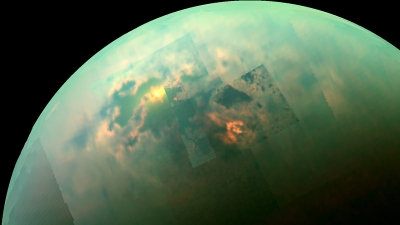
Large ammonia crystals that form in this ice giant’s upper atmosphere cause electrical storms the size of the United States and lightning strikes a thousand times more powerful than those on Earth.
Saturn’s flicking polar lights dance higher above the planet – 750 miles (1,200 km) – than any known aurora in the solar system. Auroras appear mostly in the high latitudes near a planet’s magnetic poles. When charged particles from the magnetosphere – the magnetic bubble surrounding a planet – plunge into the planet’s upper atmosphere, they cause the atmosphere to glow. The curtain shapes show the paths that these charged particles take as they flow along the lines of the magnetic field between the magnetosphere and the uppermost part of the atmosphere.
Picture Credit : Google
